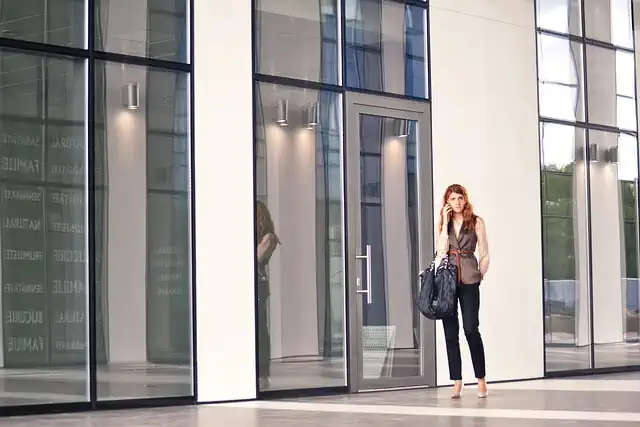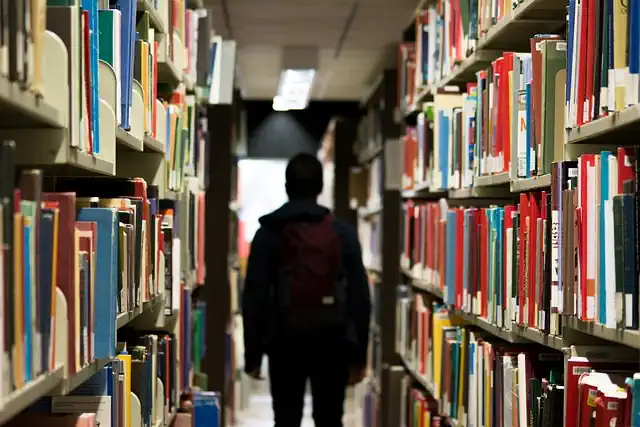How To Save Money Energy
“Cut costs, not comfort: Tips for saving energy and money.”
Introduction
Saving money on energy is an important aspect of modern living. With the increasing cost of energy, it is essential to find ways to reduce energy consumption and save money. In this article, we will discuss some effective ways to save money on energy.
Switch to LED Lighting
Are you tired of high energy bills? Do you want to save money while also reducing your carbon footprint? One simple solution is to switch to LED lighting.
LED stands for Light Emitting Diode, and these bulbs are much more energy-efficient than traditional incandescent bulbs. In fact, they use up to 80% less energy, which means you’ll see a significant reduction in your energy bills.
LED bulbs also last much longer than traditional bulbs, which means you’ll save money on replacements over time. While incandescent bulbs typically last around 1,000 hours, LED bulbs can last up to 25,000 hours. That’s a huge difference!
But what about the cost of LED bulbs? While they may be more expensive upfront, the long-term savings make them a worthwhile investment. Plus, the price of LED bulbs has come down significantly in recent years, making them more affordable than ever.
When shopping for LED bulbs, it’s important to look for the right color temperature and brightness level for your needs. LED bulbs come in a range of colors, from warm white to cool white, and the brightness is measured in lumens. A 60-watt incandescent bulb produces around 800 lumens, so look for an LED bulb with a similar brightness level.
Another benefit of LED lighting is that it produces less heat than traditional bulbs. This means you’ll save money on cooling costs in the summer, as your air conditioning won’t have to work as hard to keep your home comfortable.
But what about the environmental impact of LED bulbs? LED bulbs are much more eco-friendly than traditional bulbs, as they use less energy and contain no hazardous materials. Plus, they can be recycled at the end of their lifespan.
Switching to LED lighting is a simple and effective way to save money on energy bills while also reducing your carbon footprint. So why not make the switch today? Your wallet and the planet will thank you.
Invest in Energy-Efficient Appliances
Are you tired of high energy bills? Do you want to save money while also reducing your carbon footprint? Investing in energy-efficient appliances is a great way to achieve both of these goals.
Energy-efficient appliances use less energy than their traditional counterparts, which means they can save you money on your energy bills. They also help to reduce greenhouse gas emissions, which is good for the environment.
When shopping for energy-efficient appliances, look for the Energy Star label. This label indicates that the appliance meets certain energy efficiency standards set by the U.S. Environmental Protection Agency. Energy Star appliances can save you up to 30% on your energy bills compared to non-certified models.
One of the most energy-hungry appliances in your home is your refrigerator. If your refrigerator is more than 10 years old, it may be time to replace it with a newer, more energy-efficient model. Look for a refrigerator with a high Energy Star rating and features like a temperature control system and an automatic defrost cycle.
Another energy-hungry appliance is your washing machine. If you have an older top-loading washing machine, consider upgrading to a front-loading model. Front-loading washing machines use less water and energy than top-loading models, which can save you money on your water and energy bills.
When it comes to your dishwasher, look for a model with a high Energy Star rating and features like a delay start option and a soil sensor. These features can help you save energy and water by allowing you to run your dishwasher during off-peak hours and by adjusting the wash cycle based on how dirty your dishes are.
If you’re in the market for a new oven or stove, consider a gas model instead of an electric one. Gas ovens and stoves are more energy-efficient than electric models, which can save you money on your energy bills. They also heat up faster and provide more precise temperature control, which can make cooking easier and more enjoyable.
Finally, don’t forget about your small appliances. Look for energy-efficient models of your toaster, blender, and coffee maker. These appliances may not use as much energy as your refrigerator or washing machine, but every little bit helps when it comes to saving money and reducing your carbon footprint.
Investing in energy-efficient appliances may require an upfront cost, but the long-term savings can be significant. Not only will you save money on your energy bills, but you’ll also be doing your part to protect the environment.
In addition to investing in energy-efficient appliances, there are other steps you can take to save energy and money in your home. These include turning off lights and electronics when you’re not using them, using a programmable thermostat to control your heating and cooling, and sealing air leaks around doors and windows.
By making these changes, you can save money and energy while also reducing your impact on the environment. So why not start today? Invest in energy-efficient appliances and take other steps to save energy in your home. Your wallet and the planet will thank you.
Use a Programmable Thermostat
Are you tired of high energy bills? Do you want to save money while also reducing your carbon footprint? One simple solution is to use a programmable thermostat.
A programmable thermostat allows you to set different temperatures for different times of the day. For example, you can set the temperature to be cooler at night when you’re sleeping and warmer during the day when you’re at work. This means you’re not wasting energy heating or cooling your home when you don’t need to.
Installing a programmable thermostat is easy and can be done by most homeowners. You can purchase one at your local hardware store or online. Once you have it, follow the instructions to install it yourself or hire a professional to do it for you.
Once your programmable thermostat is installed, it’s time to start programming it. The first step is to set the time and date. This is important because it will ensure that your thermostat is running on the correct schedule.
Next, you’ll want to set the temperature for each time of the day. Most programmable thermostats have four different settings: wake, leave, return, and sleep. Wake is the time you wake up in the morning, leave is the time you leave for work, return is the time you come home from work, and sleep is the time you go to bed at night.
When setting the temperature for each time of the day, it’s important to consider your comfort level. You don’t want to set the temperature too high or too low, as this can make you uncomfortable. Instead, aim for a temperature that is comfortable for you and your family.
Another important factor to consider when programming your thermostat is the weather. If it’s going to be a particularly hot or cold day, you may want to adjust the temperature accordingly. This will ensure that your home stays comfortable no matter what the weather is like outside.
One of the biggest benefits of using a programmable thermostat is the money you’ll save on your energy bills. By only heating or cooling your home when you need to, you’ll reduce your energy usage and save money. In fact, according to the U.S. Department of Energy, you can save up to 10% on your energy bills by using a programmable thermostat.
In addition to saving money, using a programmable thermostat is also good for the environment. By reducing your energy usage, you’ll be reducing your carbon footprint and helping to protect the planet.
In conclusion, if you want to save money on your energy bills and reduce your carbon footprint, using a programmable thermostat is a simple and effective solution. By programming your thermostat to only heat or cool your home when you need it, you’ll save money and help protect the environment. So why not give it a try? Your wallet and the planet will thank you.
Seal Air Leaks in Your Home
Are you tired of paying high energy bills every month? One of the easiest ways to save money on your energy bills is by sealing air leaks in your home. Air leaks can cause your heating and cooling systems to work harder than they need to, which can lead to higher energy bills. In this article, we will discuss how to identify air leaks in your home and how to seal them.
The first step in sealing air leaks is to identify where they are in your home. Common areas for air leaks include windows, doors, electrical outlets, and vents. You can use a candle or incense stick to detect air leaks. Simply hold the candle or incense stick near the suspected area, and if the flame or smoke moves, you have an air leak.
Once you have identified the air leaks in your home, it’s time to seal them. One of the easiest ways to seal air leaks is by using weatherstripping. Weatherstripping is a material that is used to seal gaps around doors and windows. It comes in a variety of materials, including foam, rubber, and vinyl. Simply measure the gap that needs to be sealed and cut the weatherstripping to fit. Then, peel off the backing and press the weatherstripping into place.
Another way to seal air leaks is by using caulk. Caulk is a material that is used to seal gaps around windows, doors, and other areas where air can leak in or out. It comes in a variety of colors and can be painted to match your home’s decor. Simply apply the caulk to the gap and smooth it out with a caulk smoothing tool or your finger.
If you have larger gaps that need to be sealed, you can use expanding foam. Expanding foam is a material that expands to fill gaps and cracks. It comes in a can and can be sprayed into the gap. Once it has expanded, you can trim off any excess foam with a knife or scissors.
In addition to sealing air leaks, there are other things you can do to save money on your energy bills. One of the easiest things you can do is to turn off lights and electronics when you’re not using them. You can also use energy-efficient light bulbs and appliances to save money on your energy bills.
Another way to save money on your energy bills is by adjusting your thermostat. During the winter months, set your thermostat to 68 degrees when you’re home and lower it when you’re away or sleeping. During the summer months, set your thermostat to 78 degrees when you’re home and higher when you’re away or sleeping.
In conclusion, sealing air leaks in your home is an easy and effective way to save money on your energy bills. By identifying and sealing air leaks, you can reduce the workload on your heating and cooling systems, which can lead to lower energy bills. In addition to sealing air leaks, there are other things you can do to save money on your energy bills, such as turning off lights and electronics when you’re not using them and adjusting your thermostat. With these simple tips, you can save money on your energy bills and reduce your carbon footprint.
Reduce Water Usage
Saving money on energy bills is a goal that many people have, but it can be difficult to know where to start. One of the easiest ways to reduce your energy usage and save money is by reducing your water usage. Not only will this help you save money on your water bill, but it will also reduce the amount of energy needed to heat and transport water.
One of the simplest ways to reduce your water usage is by fixing any leaks in your home. Even a small leak can waste a significant amount of water over time, which can add up on your water bill. Check your faucets, toilets, and showerheads for leaks and make any necessary repairs.
Another way to save water is by installing low-flow showerheads and faucets. These fixtures use less water than traditional ones, but still provide adequate water pressure for your needs. You can also install a low-flow toilet, which uses less water per flush than a standard toilet.
When washing dishes or doing laundry, try to only run full loads. This will reduce the number of times you need to run these appliances, which will save water and energy. You can also consider using a dishwasher instead of washing dishes by hand, as dishwashers typically use less water than hand washing.
When it comes to watering your lawn and garden, try to do so in the early morning or late evening. This will reduce the amount of water lost to evaporation during the heat of the day. You can also consider using a drip irrigation system, which delivers water directly to the roots of your plants and reduces water waste.
Another way to save water is by taking shorter showers. Showers can use a significant amount of water, especially if you have a high-flow showerhead. Try to limit your showers to five minutes or less, and consider turning off the water while you lather up or shave.
If you have a swimming pool, consider using a pool cover. This will reduce the amount of water lost to evaporation, which can save you money on your water bill. You can also consider using a solar cover, which will help heat your pool and reduce the amount of energy needed to keep it warm.
Finally, consider collecting rainwater for use in your garden. This is a great way to reduce your water usage and save money on your water bill. You can purchase a rain barrel or make your own using a large container and a few simple tools.
Reducing your water usage is a simple and effective way to save money on your energy bills. By fixing leaks, installing low-flow fixtures, running full loads, watering at the right time, taking shorter showers, using a pool cover, and collecting rainwater, you can significantly reduce your water usage and save money. So why not give it a try? Your wallet (and the environment) will thank you.
Unplug Electronics When Not in Use
Saving money on energy bills is a goal that many people have, but it can be difficult to know where to start. One simple and effective way to reduce your energy usage is to unplug electronics when they are not in use. This may seem like a small change, but it can make a big difference in your energy consumption and your wallet.
Many electronics continue to use energy even when they are turned off. This is known as standby power, and it can account for up to 10% of your home’s energy usage. By unplugging electronics when they are not in use, you can eliminate this standby power and save money on your energy bills.
To get started, take a look around your home and identify electronics that are not in use for long periods of time. This could include items like phone chargers, gaming consoles, and kitchen appliances. When you are not using these items, unplug them from the wall to eliminate standby power.
Another way to reduce standby power is to use power strips. These devices allow you to plug multiple electronics into one outlet and turn them all off at once. This is especially useful for items like home entertainment systems, which often have multiple components that are not in use at the same time.
In addition to unplugging electronics when they are not in use, there are other steps you can take to reduce your energy usage and save money. One of the most effective ways to do this is to switch to energy-efficient light bulbs. These bulbs use less energy than traditional incandescent bulbs and can last up to 25 times longer.
Another way to save energy is to adjust your thermostat. By lowering your thermostat by just a few degrees in the winter and raising it in the summer, you can save a significant amount of energy and money. You can also consider installing a programmable thermostat, which allows you to set different temperatures for different times of the day.
Finally, it is important to be mindful of your energy usage throughout the day. This means turning off lights when you leave a room, using natural light whenever possible, and avoiding unnecessary energy usage. By making small changes to your daily routine, you can reduce your energy consumption and save money on your energy bills.
In conclusion, unplugging electronics when they are not in use is a simple and effective way to save money on energy bills. By eliminating standby power, you can reduce your energy consumption and make a positive impact on the environment. Additionally, by making other small changes to your daily routine, you can further reduce your energy usage and save even more money. So why not give it a try? Your wallet (and the planet) will thank you.
Plant Trees and Shrubs for Natural Shade
Saving money on energy bills is a goal that many homeowners strive for. With the cost of energy constantly on the rise, it’s important to find ways to reduce your energy consumption and save money. One way to do this is by planting trees and shrubs for natural shade.
Trees and shrubs provide natural shade that can help keep your home cool during the hot summer months. By blocking the sun’s rays, they can reduce the amount of heat that enters your home, which can help lower your cooling costs. In addition, trees and shrubs can also help reduce the amount of wind that enters your home, which can help keep your home warmer during the winter months.
When choosing trees and shrubs for natural shade, it’s important to consider the location of your home. If you live in a hot climate, you may want to choose trees and shrubs that provide dense shade, such as oak or maple trees. These trees can provide up to 90% shade, which can significantly reduce the amount of heat that enters your home.
If you live in a cooler climate, you may want to choose trees and shrubs that provide partial shade, such as birch or dogwood trees. These trees can provide up to 50% shade, which can help keep your home cooler during the summer months, while still allowing some sunlight to enter your home during the winter months.
In addition to providing natural shade, trees and shrubs can also help improve the overall appearance of your home. By adding greenery to your yard, you can create a more inviting and welcoming environment for your family and guests. Trees and shrubs can also help improve the air quality around your home by absorbing pollutants and releasing oxygen into the air.
When planting trees and shrubs for natural shade, it’s important to consider the size and placement of the plants. Trees should be planted at least 20 feet away from your home to prevent damage from falling branches or roots. Shrubs should be planted closer to your home, but still far enough away to prevent damage from overgrowth.
It’s also important to choose plants that are appropriate for your climate and soil type. Some trees and shrubs may require more water or sunlight than others, so it’s important to choose plants that will thrive in your specific environment.
In addition to planting trees and shrubs for natural shade, there are other ways to reduce your energy consumption and save money on your energy bills. Installing energy-efficient windows and doors, sealing air leaks, and upgrading your insulation can all help reduce the amount of energy your home uses.
By taking steps to reduce your energy consumption, you can not only save money on your energy bills, but also help protect the environment. Planting trees and shrubs for natural shade is just one way to make your home more energy-efficient and environmentally friendly. So why not start today and enjoy the benefits of a cooler, more inviting home?
Conclusion
Conclusion: Saving money on energy is not only good for your wallet, but also for the environment. By implementing simple changes such as turning off lights and electronics when not in use, using energy-efficient appliances, and properly insulating your home, you can significantly reduce your energy bills. Additionally, consider using renewable energy sources such as solar panels or wind turbines to further reduce your carbon footprint and save money in the long run. With a little effort and awareness, anyone can make a positive impact on both their finances and the planet.







